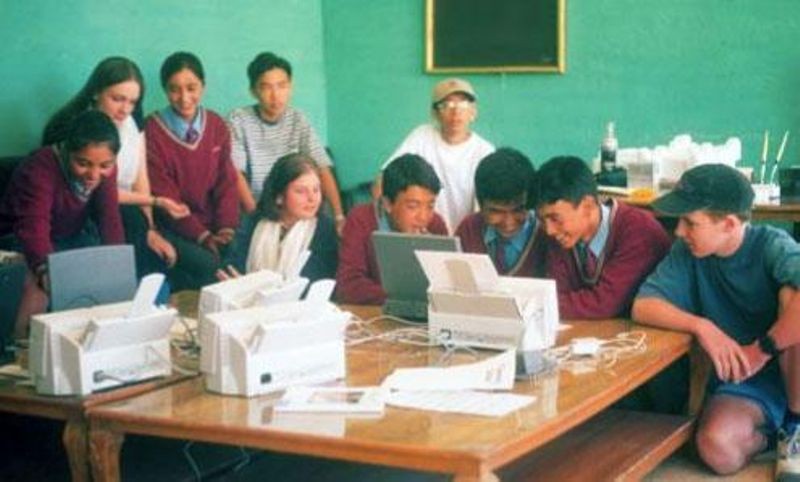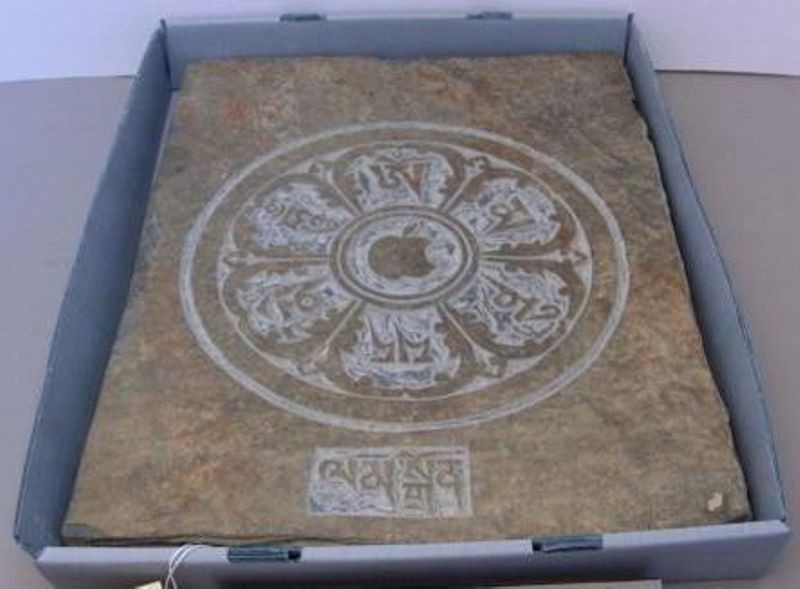
Many consider novelist Arthur C. Clarke’s 1953 story The Nine Billion Names for God to be one of the finest stories in the history of science fiction. It’s less than three thousand words and yet creates an entire universe within those words. Computers had started to penetrate popular culture and were being used in an impressive array of new applications. Nonetheless, many might have found it a stretch to write a story about using a computer in a traditional Buddhist monastery. But The Nine Billion Names of God does just that.
The plan: to print all possible combinations of letters in a special alphabet that might possibly be a name for God. The idea was that the Universe was created to allow for humans to come up with all the possible names for God, and that the recording of these names was the main task of the monks. The lama (the head monk) ordered an Automatic Sequence Computer (Mark V) to speed up the work that these monks had toiled on for centuries. In the end, of course, completion of this project at superhuman speeds leads to the sudden and thorough destruction of the Universe… always a danger when you’re dealing with the application of technologies to secrets man is never meant to know! It may seem like a stretch to apply computers to the ancient, sacred traditions of Buddhism, but that isn’t so far off from a remarkable project undertaken by Apple engineer Ken Krugler in the early 1990s.

The Lamdon School
Krugler was initially hired by Apple to work on operating systems for the Lisa computer. (Lisa was a dramatic move for Apple that brought the graphical user interface to a mass-produced computer and inspired the much more successful Macintosh in 1984). Krugler later helped develop the Kanji version of the Macintosh operating system. A few years after leaving Apple to start TransPac Software, Krugler visited the Ladakh region of India with a group of Apple employees and learned about the Lamdon School.
In Ladakh, the traditional language for education was either Urdu, or for older students, English. There were no schools in Ladakh that taught the Ladakhi language or culture. Morup Namgyal, a well-respected Ladakhi artist, saw a need to teach children their traditional language and culture after years of Indian Army presence and increased visitation by Western tourists. Morup led an international tour of artists to raise the funds to found the Lamdon School, and then served as its first teacher to seven students. The school expanded, adding courses in every area of education in addition to teaching the traditional Ladakhi language.
Introducing computers to this world would be difficult because most personal computers used only roman alphabets. Ladakhi uses a traditional Tibetan script, which posed a serious problem. Krugler had heard about a Tibetan Macintosh project from Steve Hartwell, then working with Otani University. The national newspaper of Bhutan (Kuensel) was published in both English and Dzongkha (the Bhutanese dialect of Tibetan) and they needed help in improving their ability to do Tibetan desktop publishing. This served as inspiration for Krugler’s attempt to equip the Lamdon School with Tibetan language-capable computers. Krugler and friends used their connections with Apple’s Singapore factory to acquire several old Macintosh PowerBook laptop computers that were the start of creating a system for the Lamdon School that could handle the Tibetan script.

Students at the Lamdon School using the desktop publishing system devised by Ken Krugler
Krugler made a deal with Claris to modify their ClarisWorks office suite to handle the Tibetan alphabet. In exchange, he was granted a site license for Ladakh. In addition, a local trek leader purchased an Apple StyleWriter printer and a teacher in Singapore donated a copier. Krugler designed a desktop publishing application using the modified version of Claris. Now the Lamdon School could produce their own textbooks. It also inspired other projects to preserve and enrich ancient, traditional languages and culture.
Perhaps the most interesting tie to Buddhism we have in the collection of the Computer History Museum is a slate of rock roughly fifteen inches by twelve inches, on which, in Tibetan script, the prayer Om Mani Padme Hum has been carved. The marker is a mani stone, a stone marker often found in the Himalayas. At some significant passes or trail junctions, you find a chorten, or shrine. Near these are often found low walls comprised of mani stones onto which has been carved various Tibetan prayers, most often Om Mani Padme Hum – “Hail to the jewel in the lotus,” one of the most important mantras in Buddhism. Some take the creation of these stones as form of meditation.

Apple Computer Mani Stone, gift of Chris and Ken Krugler
As a way to celebrate the creation of the system used at the Lamdon School as well as Ken Krugler’s work, the school commissioned the creation of a mani stone. The stone features not only the traditional mantra carved into it, but in the center is carved the logo of Apple Computer. At the bottom of the Apple mani stone the inscription reads “[A] lamp that lights the path,” which refers to their use of the Macintosh to teach students at the school.
So one of the oldest religions practiced in the world has come to embrace the computer. Today, even the Dalai Lama, the leader of all Tibetan Buddhists, has an official Twitter account!
Special thanks to Ken Krugler for his assistance with this article.
Read the story The Nine Billion Names of God
Follow the Dalai Lama on Twitter